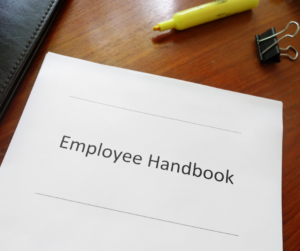 Overtime and Work Schedule Policies
Overtime and Work Schedule Policies
If your company has regular work schedules or potential for overtime, you need to define that in your Employee Handbook. I won’t go into all the possible rules for overtime here; suffice it to say that, if you have hourly employees (these are referred to as “nonexempt employees”) and you adhere to the standard forty-hour week, you will need to pay overtime and time-and-a-half if they work more than forty hours. However, there are all sorts of rules relating to the “work period” and how you calculate overtime (for example, if nonworked paid time counts towards the forty hours). You will need to decide what you will pay and what you won’t according to federal and state laws and then put it in writing.
Salaried employees (referred to as “exempt employees”) are not entitled to overtime (presumably this is because they are generally paid more than hourly workers). The theory is that salaried employees do their job until they are done and you do not count hours. This is where you need to be very careful with any compensation for “extra” hours worked because any attempt to compensate salaried employees for additional hours will put them into the nonexempt category. I do not recommend using “comp time” for employees who work more than expected as it could be construed as being owed to them as overtime or pay for this work. The CEO of a design firm I worked with got into serious trouble with the labor department by “requiring” a certain number of hours from her junior designers. Since the hours were counted, she had to go back for two years and pay overtime for all hours that were recorded in employee files on time sheets. A very costly mistake. These rules and others are defined by the Fair Labor Standards Act.
Fair Labor Standards Act (FLSA)
The FLSA sets minimum hourly wages, training wages, overtime hours and rates, and regulates the employment of children under eighteen. If state and federal laws conflict, employers must follow the one most favorable to the employee.
Substance Abuse and Workplace Violence Policies
Although it seems like common sense that, due to potential risk, you don’t tolerate the abuse of any drugs, legal or illegal, at work, you do actually have to say it. You also need to identify your remedy for it (warnings, termination, counseling, outpatient treatment, etc.)
And of course, you don’t tolerate violence, but it will come up so decide how you’ll deal with it now and put that in your employee handbook. I once had an employee come to work drunk after calling in sick and then promptly pick a fight with another employee. As far as I was concerned he’d hit the trifecta (abuse of sick leave, alcohol abuse at work, violence at work) and I fired him. But you might be surprised that his manager wanted to keep him on because he was “such a good worker.” Had the rules for all three of those offenses not been spelled out in our handbook, the manager would have tried to get me to relent and keep the employee on.
Remember, what you’re willing to tolerate is part of your culture, so be very careful when setting your policies.
Company Rules
Company rules are interesting because they are the list of things you absolutely will not tolerate. These are the things that are first offense causes for firing. I’ve also seen this called the company “code of conduct” or “rules of conduct.” Interestingly, being fired for breaking an expressed rule is the one circumstance in which our state Employment Security Department will deny unemployment benefits. You can let someone go for all sorts of good reasons but, unless they break a rule, they will most likely be eligible for unemployment or more.
Things you will likely include in your rules are:
- Theft or inappropriate removal or possession of property of the Company or others
- Falsification of timekeeping records
- Working under the influence of alcohol or illegal drugs
- Possession, distribution, sale, transfer, or use of alcohol or illegal drugs in the workplace
- Fighting or threatening violence in the workplace
- Boisterous or disruptive activity in the workplace
- Negligence or improper conduct leading to damage of Company-owned, customer-owned, or coworker-owned property
- Insubordination or other disrespectful conduct
- Violation of safety or health rules
- Sexual or other unlawful or unwelcomed harassment
- Discrimination
- Excessive absenteeism or any absence without notice
- Excessive tardiness or leaving work without permission
- Unauthorized use of telephones, or other Company-owned equipment
- Using Company equipment for purposes other than business (i.e. playing games on computers or personal Internet usage)
- Unauthorized disclosure of business “secrets” or confidential information
- Violation of personnel policies
- Unsatisfactory performance or conduct
These are just a few sample rules. You can add as many as you like, but just make sure you are clear that violating any of the items on this list will lead to immediate termination. (The above rules are from a sample employee handbook courtesy of Stonetrust Commercial Insurance Company.)
Excerpted from my book, “Putting Together the Entrepreneurial Puzzle: The Ten Pieces Every Business Needs to Succeed.” Available here on Amazon.
